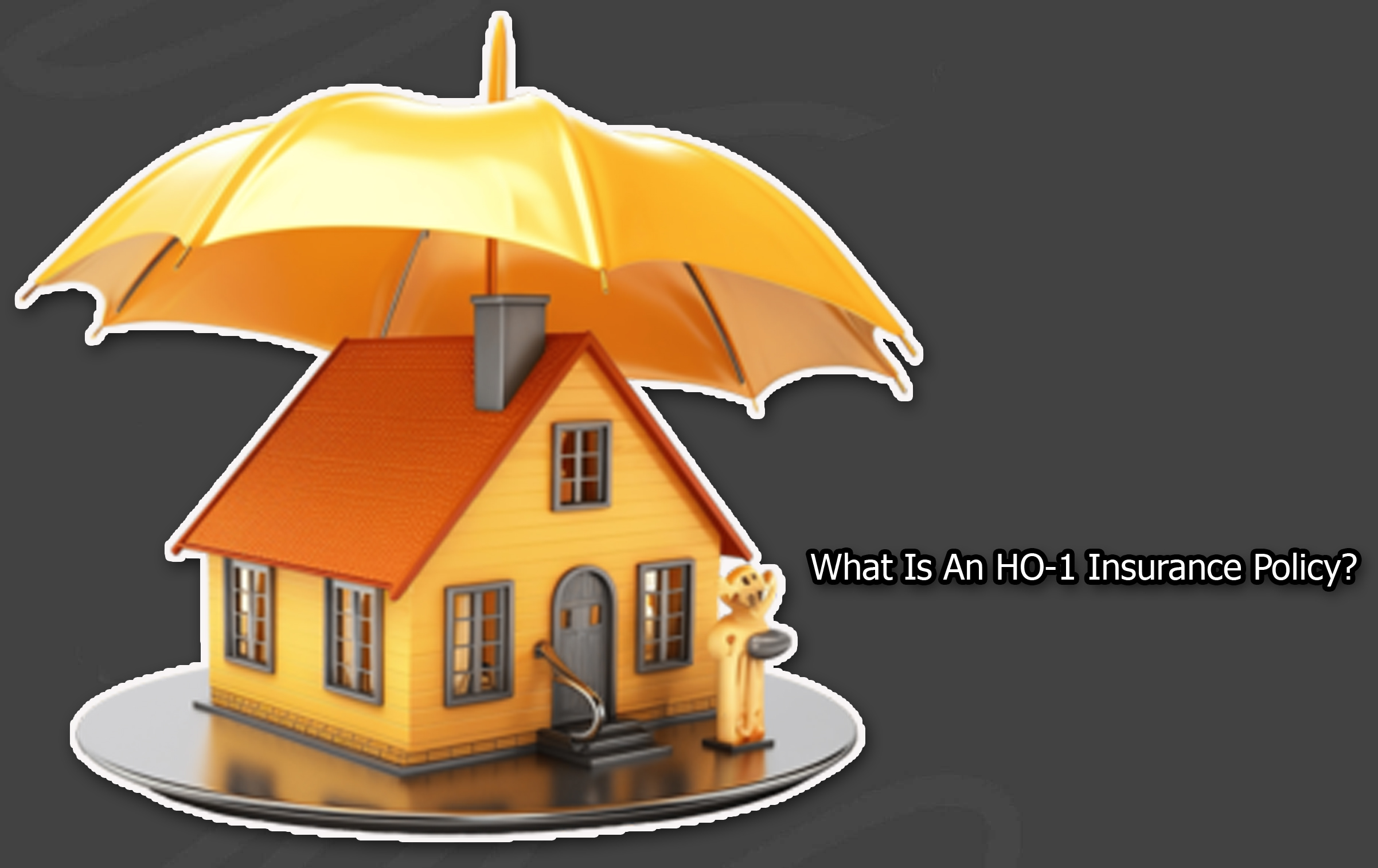
What Is an HO-1 Insurance Policy? When it comes to protecting your home, understanding the various types of homeowners’ insurance policies is important. Among these, the HO-1 insurance policy is well-known as a basic form of coverage.

While it may not be as comprehensive as other types of homeowners insurance, it serves a specific purpose for those who seek minimal and cost-effective protection.
What Is An HO-1 Insurance Policy?
An HO-1 insurance policy, also known as a “basic form policy,” is the most straightforward type of homeowners insurance. It offers limited coverage compared to other policies like HO-3 or HO-5 but can be an option for specific homeowners with particular needs.
Furthermore, the HO-1 policy covers your home and personal belongings against a limited set of perils explicitly listed in the policy.
While it’s not as common today due to restrictive coverage, it still serves as an affordable option for homeowners who are less concerned about comprehensive protection.
What Does HO-1 Insurance Policy Cover?
The HO-1 insurance policy provides coverage on a named-peril basis, meaning it only protects against risks explicitly mentioned in the policy. If a peril isn’t listed, it’s not covered. Common perils covered under an HO-1 policy include:
- Fire or lightning
- Explosion
- Vehicle damage
- Hail or windstorm
- Riot or civil commotion
- Aircraft damage
- Theft
- Volcanic eruption
- Smoke
- Vandalism or malicious mischief
More importantly, it is essential one knows that HO-1 policies typically cover the structure of your home but often exclude personal liability coverage and additional living expenses if you need to relocate temporarily.
How Does an HO-1 Policy Differ from Other Homeowners Insurance Policies?
To fully understand the limitations of an HO-1 policy, it’s helpful to compare it with other common types of homeowners insurance:
HO-2 (Broad Form Policy)
Covers all the perils listed under an HO-1 policy, plus additional ones like falling objects, water damage from plumbing issues, and electrical surges.
HO-3 (Special Form Policy)
This is the most popular type of homeowners insurance. It provides open-peril coverage for your home’s structure, meaning it covers all risks except those explicitly excluded. What’s more, personal belongings are covered on a named-peril basis.
HO-5 (Comprehensive Form Policy)
Offers open-peril coverage for both your home and personal belongings, making it the most comprehensive policy.
HO-8 (Modified Coverage Form)
Designed for older homes, covering the property’s actual cash value rather than replacement cost.
Compared to these policies, the HO-1 is limited in scope, making it less ideal for homeowners seeking broad protection.
Pros And Cons Of An HO-1 Insurance Policy
Here are the pros and cons associated with the HO-1 Policy:
Pros
- HO-1 policies are generally cheaper than other types of homeowners insurance due to their limited coverage.
- The policy is straightforward, covering only the perils explicitly listed.
- Moreover, it is suitable for homeowners who are primarily concerned with protecting the structure of their home against a narrow set of risks.
Cons
- This insurance does not cover additional living expenses, personal liability, or medical payments for injuries on your property.
- Many insurers no longer offer HO-1 policies due to their restrictive nature.
- Homeowners are left vulnerable to risks not listed in the policy.
Who Should Consider An HO-1 Insurance Policy?
An HO-1 insurance policy may be suitable for:
- Homeowners with Minimal Risks: If your home is in an area with a low likelihood of damage from unlisted perils like floods or earthquakes.
- Owners of Secondary Properties: If you have a vacation home or rental property that doesn’t require extensive coverage.
- Budget-Conscious Homeowners: Those who want basic coverage at a lower cost.
However, for most homeowners, the limited protection of an HO-1 policy may not justify its affordability. Also, it is essential to assess your needs and risks before opting for this type of policy.
Exclusions of HO-1 Insurance Policies
HO-1 insurance policies have significant limitations, and they include:
No Coverage for Personal Liability
If someone is injured on your property, you’ll need separate liability coverage.
Exclusion Of Common Risks
Risks like water damage, mold, and natural disasters such as floods or earthquakes are not covered.
No Additional Living Expenses
If your home becomes uninhabitable, you won’t be able to receive reimbursement for temporary housing.
Given these exclusions, it’s critical to consider additional insurance or alternative policies if your home faces a broader range of risks.
How To Purchase An HO-1 Insurance Policy
Purchasing an HO-1 policy involves a few key steps you can follow:
Assess Your Needs
Determine the risks your home is most likely to face and whether an HO-1 policy aligns with those risks.
Research Insurance Providers
Not all insurers offer HO-1 policies. You can research companies that specialize in basic homeowners insurance.
Compare Quotes
Obtain quotes from multiple providers to ensure you’re getting the best deal.
Review The Policy Details
Carefully read the fine print to understand what is and isn’t covered.
Frequently Asked Questions
Is An HO-1 Insurance Policy Still available?‘
HO-1 policies are less common today because they now offer limited coverage. Many insurers have grown out of the phase and favor comprehensive options like HO-3 policies.
Does An HO-1 Policy Cover Natural Disasters?
An HO-1 policy covers specific natural disasters like fire and windstorms but does not include floods or earthquakes. What’s more, separate policies are needed for those risks.
Can I Add Additional Coverage To An HO-1 Policy?
Yes, you may be able to purchase endorsements or riders to enhance coverage, though it might be more cost-effective to choose a different policy type.